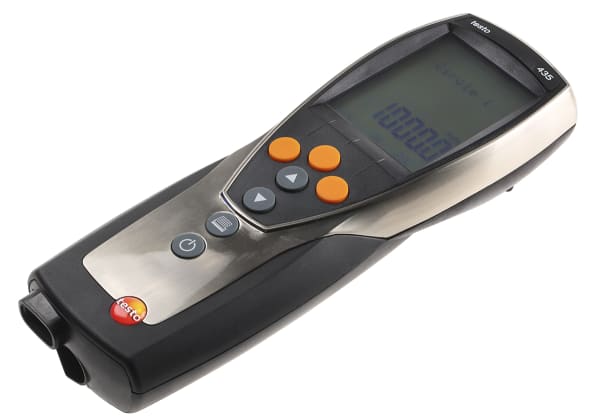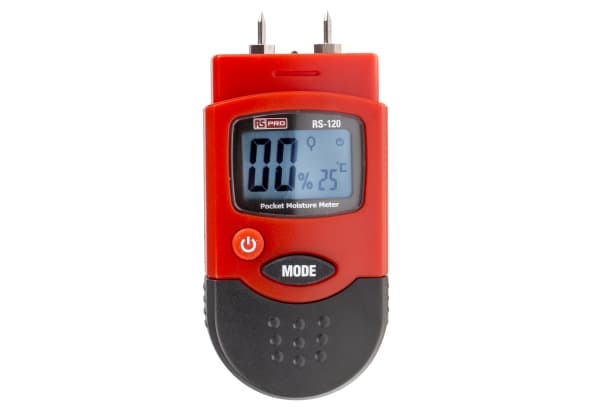- Published 16 Mar 2023
- Last Modified 29 Aug 2023
- 5 min
How to Measure Wind Speed
This guide will include how to measure wind speed and how you can use the various instruments available.

Reviewed by David Carmichael, Solution Engineer (January 2023)
So, what instrument measures wind speed? These are called anemometers. Some of these instruments use innovative technology whilst some will use traditional methods for measuring wind speed. Both are dependable but the newer handheld devices are more convenient due to their low weight and portability.
Wind can pose a danger in certain circumstances so being able to monitor it can often supply helpful information on how to safeguard against any damage it may cause. We will cover some interesting subjects relating to wind speed measurement and some of the industries and applications that they are used in.
Weather stations are the first thing that comes to mind when contemplating wind speed measurement. There are, however, many other areas where wind speed measurement can be extremely useful. One example is in a wind tunnel and aerodynamics design where accurate wind speed control can be used to design the most streamlined vehicles and products.
How to Measure Wind Speed Using an Anemometer
There are essentially three main types of anemometers:
- Vane anemometers
- Cup anemometers
- Thermal anemometers
So how is wind speed measured using these different types of instruments?
Vane Anemometers
These instruments are available as portable handheld units as well as in larger formats. They work by using the same principle as windmills where the wind's energy was harnessed by driving a milling rotor propelled by large wind vanes.
The vane anemometers have a small propellor-type rotor that rotates when faced in the direction of the oncoming wind. The rotor speed is monitored by the electronics in the unit and a measure of wind speed is displayed on a digital display.
Cup Anemometers
These are the most recognised anemometer. They have several cups configured horizontally in a cross format which is mounted on a rotating centre pole. The wind is caught in the recess of each cup which propels and rotates the centre spindle. The wind speed is then measured by electronically monitoring the rotational speed of the shaft and then shown on a display.
Thermal Anemometers
Thermal anemometers are commonly used in industry such as in a wind tunnel when working with aerodynamics. They work by passing an electric current through a very thin wire. The wire heats up and the temperature is monitored by a temperature sensor or in some cases by monitoring the current flowing through the wire.
When you place the wire assembly in a moving flow of air the temperature of the wire will drop. This will increase the electrical current flowing through the wire as its resistance falls. The change in current is interpolated by the electronics in the device and a direct read-out of airflow velocity or wind speed is shown on the display.
How to Measure Wind Direction
We have all seen the quaint weathervanes mounted on the idealistic country cottage where there is a rotating pointer in the form of a cockerel with its beak pointing out the wind direction. The cockerel will align with the wind direction and the leading edge of the sail (the head), will catch less wind so will always face in the direction of the oncoming wind.
Modern anemometers that possess the ability to measure wind direction as well as wind speed work in a comparable manner to the weathervane. Wind speed direction is measured in the same way. There is a small wind vane mounted on a rotating stem. The usual method of detecting the position of the stem is by using a set of magnetic sensors that relay the information to the device's electronics. There is also an onboard electronic compass. The instrument will show you wind direction by interpreting the position of the rotating stem relative to the magnetic north.
How to Measure Wind Speed in Knots
Most current-day devices will allow you to set your desired wind speed measurement units. Wind speed can be measured in knots (nautical miles per hour), miles per hour, and kilometres per hour. Some weather station anemometers will measure wind speed in feet per minute.
What Wind Speed is Dangerous?
Wind speed is classified using the Beaufort Wind Scale ranging from force 0 to force 12 strength. At any speed above 30 mph, force 6 can be dangerous.
The Beaufort Wind Scale was developed by Admiral Sir Francis Beaufort in 1805. The scale starts at force 0 and increments to force 12.
Wind Force | Wind Speed | Description |
|---|---|---|
| Force 0 | Less than 1mph | Calm |
| Force 2 | 1-3mph | Light breeze |
| Force 3 | 8-12mph | Gentle breeze |
| Force 4 | 13-16mph | Moderate breeze |
| Force 5 | 19-24mph | Fresh breeze |
| Force 6 | 25-31mph | Strong breeze |
| Force 7 | 32-38mph | Moderate gale |
| Force 8 | 39-46mph | Fresh gale |
| Force 9 | 47-54mph | Strong gale |
| Force 10 | 55-63mph | Whole gale |
| Force 11 | 64-73mph | Storm |
| Force 12 | Greater than 73mph | Hurricane |
Caution should be exercised when venturing out at any wind speed above force 5. Building damage is highly likely at force 9 and above.
So what wind speed is a hurricane? A hurricane is classed as the strongest wind force category and starts at 73 mph. This is classified as force 12. Within the force 12 range are five further categorisations and increases in hurricane wind speed:
Wind Force & Hurricane Category | Wind Speed |
|---|---|
| Force 12 Category 1 hurricane | 74-95mph |
| Force 12 Category 2 hurricane | 96-110mph |
| Force 12 Category 3 hurricane | 111-129mph |
| Force 12 Category 4 hurricane | 130-156mph |
| Force 12 Category 5 hurricane | 156mph or greater |
Major damage to buildings and structures can occur with those kinds of high wind speeds.


